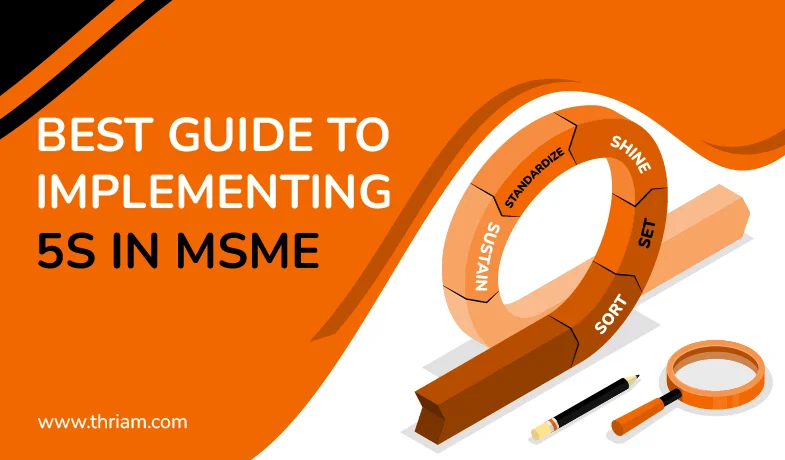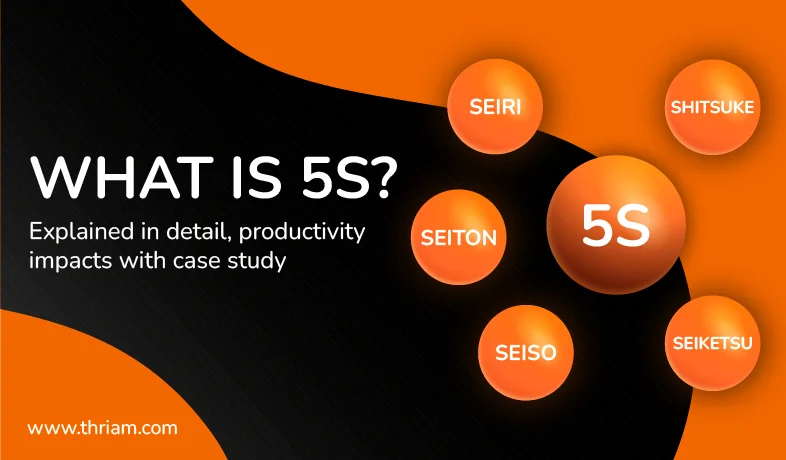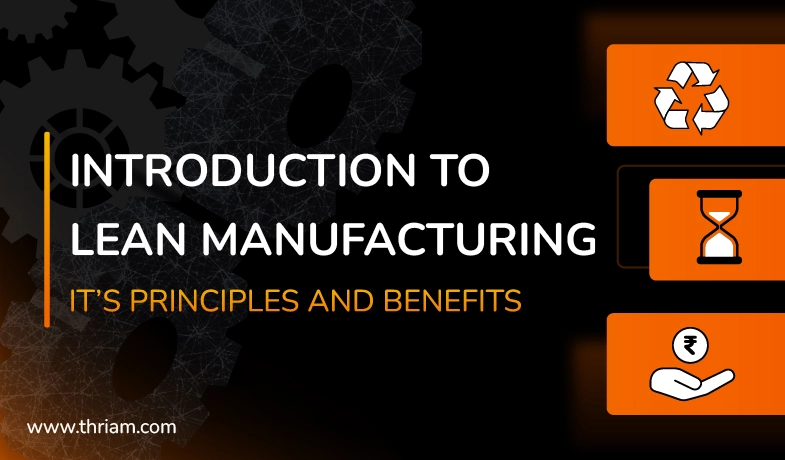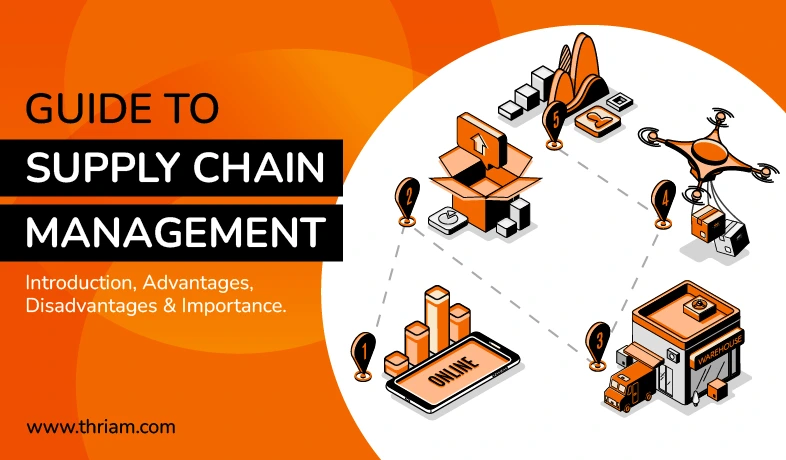Implementing 5S in MSMEs: A Path to Efficiency and Productivity

Micro, Small, and Medium Enterprises (MSMEs) play a crucial role in the economy. To thrive in a highly competitive market, MSMEs must adopt efficient and productive practices. One such practice is the implementation of the 5S methodology. In this blog, we will explore the step-by-step process to successfully implement 5S in MSMEs, enabling them to optimize their operations and achieve sustainable growth.
What is 5S?
The 5S methodology is a systematic approach to organizing and maintaining a clean and efficient workspace. It originated in Japan and has been widely adopted by numerous organizations around the world across various industries. The methodology focuses on five core principles, each beginning with the letter "S": Sort, Set in Order, Shine, Standardize, and Sustain.
Steps to implement 5s in your organization:
Understanding the 5S Principles

The foundation of 5S lies in its five core principles: Sort, Set in Order, Shine, Standardize, and Sustain. Briefly explain each principle, emphasizing their importance in creating an organized, clean, and efficient workplace.
Creating Awareness and Gaining Management Support

Explain the significance of gaining management support and creating awareness among employees about the benefits and objectives of implementing 5S. Highlight the roles and responsibilities of management in championing and facilitating the 5S implementation process.
Establishing a 5S Team

Discuss the significance of forming a dedicated 5S team comprising representatives from different departments. Explain how their diverse perspectives can contribute to the successful implementation of 5S. Highlight the responsibilities and functions of the team, such as conducting training sessions, guiding employees, and monitoring progress.
Assessing the Current State

Explain the importance of conducting a thorough assessment of the current workplace conditions. Encourage MSMEs to identify areas that need improvement, such as cluttered spaces, redundant equipment, inefficient processes, or safety hazards. Provide tips on conducting a comprehensive assessment.
Sort (Seiri)
Detail the process of sorting that involves removing unnecessary items and identifying essential ones. Explain how categorizing items based on their relevance to the workspace can declutter the environment and improve productivity. Provide practical tips on how to efficiently implement this step, emphasizing the importance of employee involvement.
Set in Order (Seiton)
Illuminate the significance of organizing and arranging items in a systematic manner. Explain the benefits of categorizing items based on usage frequency or functionality and designating specific locations for each item. Provide guidance on how to create a visually appealing workplace that optimizes workflow and makes it easy to locate and return items.
Shine (Seiso)
Stress the importance of cleanliness and hygiene in the workplace. Discuss the benefits of regular cleaning and maintenance to improve efficiency and create a positive work environment. Share recommendations on developing a comprehensive cleaning schedule and involving employees in maintaining a clean workspace.
Standardize (Seiketsu)
Explain the need to establish standardized processes and procedures for sustaining the improvements achieved through the previous steps. Discuss the creation of visual instructions, checklists, and guidelines to ensure consistency. Emphasize the importance of training employees and continually reinforcing these standardized practices.
Sustain (Shitsuke)
Elucidate the significance of sustaining the improvements achieved through 5S implementation. Explain how regular monitoring and evaluation can help identify deviations and prompt corrective action. Encourage employee involvement and engagement in maintaining 5S practices over the long term.
Review and Continuous Improvement

Emphasize the need for regular reviews to assess the effectiveness of implemented 5S practices. Discuss the importance of conducting periodic audits to identify areas for further improvement. Provide guidance on how to make necessary adjustments and enhancements to ensure ongoing efficiency and productivity gains.
Benefits of Implementing 5S:
Implementing the 5S methodology offers several tangible benefits for organizations. By creating an organized and efficient work environment, organizations can experience improved productivity, reduced waste, enhanced workplace safety, and increased employee morale and satisfaction. Additionally, the standardization and sustainment of 5S practices lay the foundation for continuous improvement and can drive long-term success.
Here are some examples of well-known companies that have implemented 5S:
Toyota
As one of the pioneers of the 5S methodology, Toyota is renowned for its commitment to creating organized and efficient work environments. The company's implementation of 5S has played a significant role in boosting productivity and quality in their manufacturing processes.
Boeing
The aerospace giant Boeing has embraced the 5S methodology to enhance efficiency, safety, and quality across its production facilities. By implementing 5S practices, Boeing has seen improved workflow, reduced waste, and increased employee engagement.
General Electric (GE)
GE, a multinational conglomerate, has adopted the 5S methodology throughout its various divisions. The company's focus on organizing workspaces, standardizing processes, and maintaining cleanliness has contributed to improved productivity and workplace safety.
Samsung
The South Korean technology giant Samsung has implemented 5S practices in its manufacturing facilities. By organizing workspaces, optimizing workflows, and maintaining cleanliness, Samsung has streamlined its operations and improved overall efficiency.
Honda
Honda, a leading automotive manufacturer, applies the 5S methodology to its production processes. With a focus on sort, set in order, shine, standardize, and sustain, Honda has achieved enhanced workplace organization, resulting in improved productivity and quality.
Nestle
The multinational food and beverage company Nestle has integrated the 5S methodology into its manufacturing and distribution centers worldwide. By implementing 5S practices, Nestle has improved operational efficiency, reduced waste, and enhanced workplace safety.
Conclusion:
Summarize the benefits and potential outcomes of implementing the 5S methodology in MSMEs. Emphasize the importance of 5S as a continuous improvement process that requires commitment, participation, and monitoring to sustain the advantages gained. Encourage MSMEs to embark on the journey of implementing 5S to optimize their operations, enhance employee morale, and achieve long-term success in a competitive business landscape.



